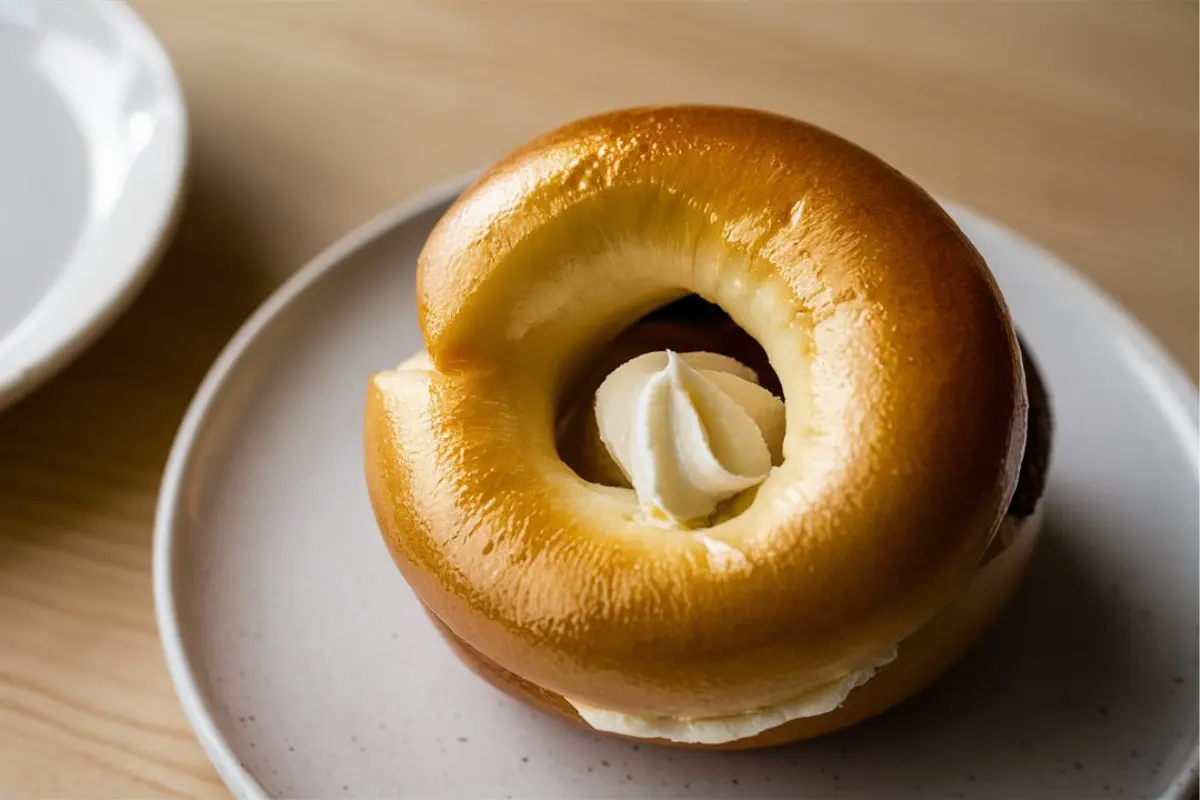Biscoff Tiramisu: A Match Made in Dessert Heaven
Welcome to a journey through the delightful world of Biscoff Tiramisu. Here, the robust flavors of coffee and the sweet, caramel notes of Biscoff come together in a mesmerizing dance of dessert perfection. This article will unveil the secrets to crafting a flawless Biscoff Tiramisu. It blends traditional Italian techniques with the modern twist of Lotus Biscoff cookies. Whether you’re a seasoned baker or a curious novice, get ready to impress both your taste buds and your guests with this exquisite treat.
The Essentials of Biscoff Tiramisu
Overview of Ingredients
The first step to creating an impeccable Biscoff Tiramisu is to gather all the necessary ingredients. You’ll need:
- Lotus Biscoff Cookies: These uniquely flavored cookies are the star of the show, providing a spicy, caramelized crunch that pairs perfectly with the creamy layers.
- Mascarpone cheese: Essential for its smooth, rich texture, mascarpone is softer and creamier than other cheeses, making it ideal for tiramisu.
- Heavy whipping cream: Adds lightness and volume to the mascarpone, creating a lush, airy layer.
- Fresh egg yolks: These will be transformed into a golden, creamy custard that binds the flavors together.
- Granulated sugar: Just enough to sweeten the deal without overpowering the subtle flavors of the other ingredients.
- Strong brewed coffee: Used to soak the Biscoff cookies. It imparts a deep, robust flavor that complements the sweetness of the custard and cookies.
- Unsweetened cocoa powder: A light dusting on top adds a touch of bitterness. This beautifully contrasts the sweetness of the dessert.
Remember, the quality of your ingredients will significantly impact the final taste, so choose them wisely. For more on Biscoff cookies and their unique flavor, learn more about Biscoff cookies.
Tools and Equipment Needed
Before diving into the recipe, make sure you have the following tools on hand:
- An 8×8 inch baking dish: The perfect size for layering your tiramisu.
- Electric mixer or whisk: Essential for achieving smooth, lump-free custard and whipped cream.
- Heat-proof bowl: Needed for making the custard over a water bath.
- Rubber spatula: A must-have for folding ingredients gently to keep the mixture airy.
- Sifter: For the final dusting of cocoa powder, ensuring an even, professional finish.
With your ingredients ready and tools set, you’re all prepared to move on to the next step: crafting the creamy layers and assembling this delightful dessert. Stay tuned as we delve into the art of tiramisu-making, where each layer is a brushstroke in this edible masterpiece.
Step-by-Step Recipe Guide
Preparing the Biscoff Layers
To start, you’ll want to get your coffee ready—it should be strong and cool enough not to disintegrate the cookies upon contact. Dip the Biscoff Cookies briefly into the coffee just until they’re soaked but not soggy. This quick dip ensures that each cookie absorbs just enough coffee to flavor it without falling apart. Arrange the soaked cookies in a single layer at the bottom of your baking dish, snug against each other to form a solid base.
Creating the Creamy Custard
Now, onto the custard, which is the heart of the Biscoff Tiramisu. In your heat-proof bowl, whisk together the egg yolks and sugar. Set this bowl over a pan of gently simmering water—make sure the water doesn’t touch the bottom of the bowl—and continue whisking. You’re looking for the mixture to double in volume and turn a pale, creamy color, which takes about 4-5 minutes. Once achieved, remove from heat.
Next, stir in the mascarpone cheese until the mixture is smooth, with no lumps remaining. The key here is to mix gently to keep the air in the custard, making it light and fluffy. Now, in a separate bowl, whip the heavy cream to stiff peaks—an electric mixer will do this in no time. Gently fold the whipped cream into the mascarpone mixture, combining them until the texture is consistent and creamy.
Assembly of Layers
With your custard ready, it’s time to layer up. Spread half of the custard over the coffee-soaked Biscoff base, smoothing it out to cover the cookies completely. Then, add another layer of coffee-dipped cookies on top of the custard. Repeat the process with the remaining custard, spreading it neatly to form the final layer.
Once your layers are assembled, cover the dish with cling film and let the Biscoff Tiramisu set in the refrigerator. It needs at least four hours, but letting it sit overnight will enhance the flavors and give the layers time to firm up.
This process not only marries the flavors of coffee and caramel but also allows the textures to meld, resulting in a dessert that’s both rich and delightful. Up next, we’ll explore the best ways to serve and store your tiramisu, ensuring every slice is as perfect as the last. Stay tuned for these final touches that will make your Biscoff Tiramisu truly unforgettable.
Serving and Storage
Finishing Touches
Once your Biscoff Tiramisu has thoroughly chilled and set, it’s time to add those final artistic touches that elevate it from a simple dessert to a show-stopping finale. Begin by dusting the top layer with unsweetened cocoa powder. Employ a fine-mesh strainer to achieve a uniform and gentle dusting. This not only adds a visually appealing contrast but also introduces a slight bitterness that beautifully counters the sweetness of the Biscoff and mascarpone layers.
For an extra touch of elegance, you might want to crumble a few Biscoff cookies and sprinkle them over the top. This not only adds texture but also reinforces the unique flavor of the dessert. Remember, the presentation is as important as the taste—first impressions count!
Tips on Storing Biscoff Tiramisu
Proper storage is key to maintaining the sublime texture and flavor of your Biscoff Tiramisu. To store, cover the baking dish with cling film. Alternatively, transfer it to an airtight container and keep it refrigerated. This dessert is best enjoyed within 48 hours of making. After this period, the cookies may soften excessively and the flavors could meld too much, losing some distinctiveness.
If you need to store the tiramisu for a longer period, consider freezing it. Place the tiramisu in the freezer right after assembling and before the final cocoa dusting. Wrap it tightly in plastic wrap, then in foil, to protect against freezer burn. When ready to serve, defrost it in the refrigerator for at least 24 hours. Add the cocoa powder just before serving.
Whether you’re serving this Biscoff Tiramisu at a formal dinner party or enjoying a slice after a casual meal, it is sure to impress. Up next, we’ll explore the nutritional content of our dessert. This will help you appreciate not only the flavors but also the ingredients that make each bite delicious.

Nutritional Information
Understanding the nutritional aspects of Biscoff Tiramisu can help you appreciate it as an indulgence that fits into your dietary considerations. Here’s a breakdown of the main nutritional components:
- Calories: Each serving of Biscoff Tiramisu is quite rich, primarily due to the mascarpone cheese and heavy whipping cream. A typical slice could range from 300 to 400 calories, depending on the portion size.
- Carbohydrates: Primarily from the Biscoff cookies and the sugar used in the custard, you can expect a moderate carbohydrate content, which also includes a small amount of dietary fiber from the cookies.
- Fats: The dessert is high in fats, with saturated fats coming from the dairy components. These provide the creamy texture and rich flavor that tiramisu is known for.
- Proteins: There is a modest protein content, contributed by the mascarpone cheese and egg yolks.
- Sugars: As a dessert, the sugar content is quite high, which includes both added sugars and those naturally present in the dairy.
It’s important to enjoy this dessert in moderation, especially if you are watching your calorie intake or managing dietary restrictions. Additionally, for those who require a lower-fat or lower-sugar version of this dessert, substitutions such as low-fat mascarpone or sugar replacements can be used. However, keep in mind that this may affect both the flavor and texture of the tiramisu.
As delightful as Biscoff Tiramisu is, being mindful of these nutritional details ensures that you can balance indulgence with health considerations, making every bite guilt-free. Up next, we’ll explore some creative variations and substitutions that can tailor this classic dessert to various dietary needs and flavor preferences. Stay tuned for innovative twists on this timeless treat!
Variations and Substitutions
Dietary Adjustments
Biscoff Tiramisu is wonderfully adaptable, allowing for various modifications to suit different dietary needs without sacrificing its delightful essence. Here are some thoughtful substitutions:
- Gluten-Free: For those avoiding gluten, substitute the Biscoff cookies with a gluten-free alternative that has a similar texture and flavor profile. Ensure all other ingredients, like cocoa powder, are certified gluten-free.
- Vegan: Replace the mascarpone cheese with a vegan cream cheese or a blended silken tofu to mimic the creamy texture. Use plant-based whipping cream and a suitable vegan alternative for eggs in the custard. Vegan Biscoff cookies are available and make a perfect base.
- Reduced Sugar: Consider using a sugar substitute in both the custard and the coffee soak, or simply reduce the quantity of sugar called for in the recipe. Remember that altering the sugar content can affect the final taste and texture, so adjustments should be made cautiously.
Alternative Flavors and Add-Ins
Innovating with flavors and add-ins can transform Biscoff Tiramisu into a new dessert every time you make it. Here are some exciting ideas:
- Spice It Up: Add a pinch of cinnamon or nutmeg to the custard for a warm, spicy note that complements the caramel flavor of Biscoff.
- Fruit Infusions: Layer thinly sliced strawberries or raspberries between the cookie and custard layers for a fruity, tart contrast that cuts through the sweetness.
- Chocolate Twist: Mix in finely chopped dark chocolate or a swirl of chocolate ganache within the layers for a decadent chocolatey version of the classic tiramisu. For those interested in exploring other unique cookie recipes that complement coffee flavors, check out this popular chocolate chip cookie recipe.
These variations not only cater to different tastes and dietary restrictions but also encourage creativity in the kitchen. Feel free to experiment with the ingredients and flavors to make a Biscoff Tiramisu that’s uniquely yours.
Embracing these modifications can open up this classic dessert to a wider audience, ensuring that everyone can enjoy a slice regardless of their dietary preferences. Up next, we will address some of the most common questions in our FAQs section, helping you perfect your Biscoff Tiramisu and solve any puzzles you might encounter along the way. Stay tuned for insightful tips and tricks!
FAQs
How do I prevent my Biscoff cookies from becoming too soggy?
To avoid soggy cookies, quickly dip them in the coffee rather than letting them soak. The key is to immerse them just long enough to absorb a bit of moisture—about 1-2 seconds per side. This way, they retain some crunch and structure, which is crucial for the layered texture of the tiramisu.
Can I make Biscoff Tiramisu a day ahead?
Absolutely, and it’s even recommended! Making your Biscoff Tiramisu a day before serving allows the flavors to meld beautifully in the refrigerator, enhancing the overall taste and firmness of the dessert. Just be sure to cover it tightly with cling film to keep it fresh and prevent it from absorbing other flavors from the fridge.
What’s the best way to serve Biscoff Tiramisu?
For the best presentation, use a sharp, thin-bladed knife to cut clean slices. Wipe the blade with a warm, damp cloth between cuts to ensure neat, defined layers. Serve chilled, and if desired, add a light dusting of cocoa powder or a sprinkle of crushed Biscoff cookies right before serving for added flair.
Is there a non-dairy alternative that works well in Biscoff Tiramisu?
Non-dairy options: You can use coconut cream or high-fat almond cream as substitutes for heavy whipping cream. These alternatives whip well and mimic the creamy texture of dairy. For the mascarpone, try vegan cream cheese options with similar richness and texture.
How long will Biscoff Tiramisu keep in the refrigerator?
When stored properly in an airtight container or tightly wrapped with cling film, Biscoff Tiramisu can last in the refrigerator for up to 5 days. Although the texture and flavor may change slightly over time, it will still be delicious. Furthermore, for optimal taste and consistency, it’s best enjoyed within the first 48 hours.
Can Biscoff Tiramisu be frozen?
Yes, you can freeze Biscoff Tiramisu for up to 1 month. To freeze, wrap the entire dish securely in plastic wrap, followed by a layer of aluminum foil. Allow it to defrost in the refrigerator a day prior to serving. Keep in mind that freezing may slightly alter the texture of the mascarpone and cream layers.
What Flavor is in Biscoff?
Biscoff cookies are known for their distinctive flavor, which comes from a unique combination of spices. The predominant flavors include cinnamon, nutmeg, ginger, allspice, and cloves. These spices give Biscoff its warm, caramelized, and slightly gingery taste, making it instantly recognizable and utterly delicious.
Why are Lotus Biscoff so good?
The appeal of Lotus Biscoff lies in its unique flavor profile and crisp texture. The cookies are caramelized through a specialized baking process, creating a rich sweetness that’s perfectly balanced with a hint of spice. This makes them not only delicious on their own but also a versatile companion to coffee, where their flavors are enhanced.
What makes Biscoff taste?
The distinct taste of Biscoff comes from the caramelization of sugar during the baking process and a carefully selected blend of spices, including cinnamon and other aromatic spices. This combination creates a deep, richly flavored cookie that pairs well with the creamy elements of desserts like tiramisu.
What goes well with Biscoff spread?
Biscoff spread, also known as cookie butter, is incredibly versatile and pairs well with a variety of foods. It’s delicious when spread on toast, pancakes, or waffles. It also works beautifully as a filling for cakes or pastries and as a dip for fruit. In desserts, it complements flavors such as vanilla, chocolate, and nuts, adding a creamy, spicy twist that enhances the overall dish.
By addressing these additional frequently asked questions, we aim to provide a comprehensive understanding of Biscoff’s unique qualities and how best to enjoy its flavor in various culinary contexts. Up next, we’ll conclude our guide to making and savoring Biscoff Tiramisu, reflecting on the joy and creativity this dessert brings to any table.




